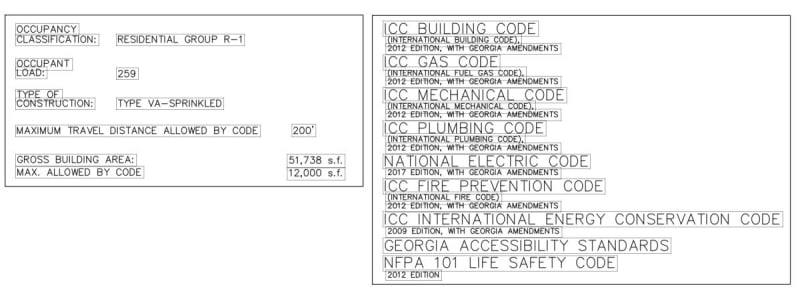SprinklerDesigner2
Mechanical
Maybe I have been wrong for a number of years but the error, if I am in error, was on the good side.
Ceilings do not exceed 10'-0" in height.
I have a motel with a laundry room of 1,000 sq ft protected by a total of twelve quick response sprinklers. This is obviously OH1 and requires a density of .15 gpm over 900 sq ft.
What I have always done is design the system to provide a density of .15 gpm over area to 900 sq ft which would require nearly all the sprinklers to operate.
I have always done it this way but have I always been wrong, even using quick response sprinklers in an OH area does NFPA #13r limit the number of flowing heads to four?
The way I read it, the way I have always read it, is if the compartment is <500 sq ft then the four head design would be used regardless of the occupancy hazard but in compartments 500 sq ft or more I would have to use the area of application from NFPA 13.
I have a Hampton Inn and the dining room is 1,500 sq ft... if I used quick response sprinklers my area of calculation would have to be 900 sq ft but if I used residential sprinklers in the dining area I would use discharge four sprinklers per the head listing.
The more I read it the more confused I become.
Ceilings do not exceed 10'-0" in height.
I have a motel with a laundry room of 1,000 sq ft protected by a total of twelve quick response sprinklers. This is obviously OH1 and requires a density of .15 gpm over 900 sq ft.
What I have always done is design the system to provide a density of .15 gpm over area to 900 sq ft which would require nearly all the sprinklers to operate.
NFPA 13r said:7.2* Design Criteria — Outside Dwelling Unit
A.7.2 It is only the intent of NFPA 13R to reference the sprinkler discharge (flow and pressure), number of design sprinklers, and position of sprinklers (distance from walls, ceilings, and other sprinklers) requirements of NFPA 13. Other rules from NFPA 13 such as sprinklering of combustible concealed spaces, hose stream demand, and water supply duration are not intended to be referenced by Section 7.2. It is also the intent of Section 7.2 to apply to those systems or portions of systems that are outside the dwelling unit but have been determined to be considered residential or incidental to residential and within the scope of this standard. (Also see A.1.1.)
I have always done it this way but have I always been wrong, even using quick response sprinklers in an OH area does NFPA #13r limit the number of flowing heads to four?
NFPA 13r said:7.2.2.1 For compartments 500 ft2 (46 m2) or less that meet all of the following conditions and are protected with quick-response sprinklers, the design area shall be permitted to be limited to the number of sprinklers in the compartment but shall not exc eed four sprinklers: The four-sprinkler design in this case applies to both residential and quick-response sprinklers. This requirement was added in the 2010 edition of NFPA 13R. Prior to the 2010 edition, residential sprinklers would have used a four-sprinkler design (or less if fewer than four sprinklers were in the corridor), but quick-response sprinklers would have had a minimum of five sprinklers in the design unless the room design method was being used.
The way I read it, the way I have always read it, is if the compartment is <500 sq ft then the four head design would be used regardless of the occupancy hazard but in compartments 500 sq ft or more I would have to use the area of application from NFPA 13.
I have a Hampton Inn and the dining room is 1,500 sq ft... if I used quick response sprinklers my area of calculation would have to be 900 sq ft but if I used residential sprinklers in the dining area I would use discharge four sprinklers per the head listing.
The more I read it the more confused I become.

